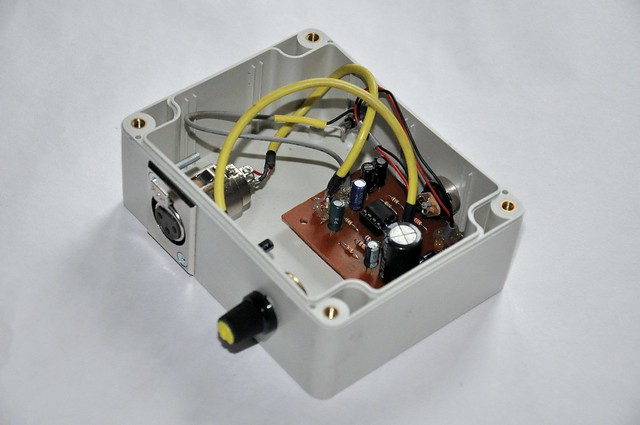This is a single chip dynamic microphone preamplifier which is design to drive using commonly available 12V single rail power supplies. Preamplifier in this article is built around popular NE5532 dual low noise operational amplifier IC and this preamplifier is specifically constructed to drive professional 600Ω dynamic microphones.
This preamplifier consists of two amplifier stages and the initial amplifier is designed to get 36dB gain and final preamplifier is used to get 16dB of gain. Preamplifier gain controller is placed in between those two amplifiers and this separation allows reducing clipping in the output waveform.
In prototyping stages, we test this preamplifier with few 600Ω dynamic microphones with a TDA2050 power amplifier. According to our observations, this unit produces excellent output with all of these microphones. To get professional results to use this preamplifier with 12V battery or with regulated power supply unit and use screened wires for both input and output connections.
Schematic, wiring diagrams and PCB design of this microphone preamplifier are available to download at google drive.
 |
| Internal view of a dynamic microphone preamplifier prototype. |
This preamplifier consists of two amplifier stages and the initial amplifier is designed to get 36dB gain and final preamplifier is used to get 16dB of gain. Preamplifier gain controller is placed in between those two amplifiers and this separation allows reducing clipping in the output waveform.
In prototyping stages, we test this preamplifier with few 600Ω dynamic microphones with a TDA2050 power amplifier. According to our observations, this unit produces excellent output with all of these microphones. To get professional results to use this preamplifier with 12V battery or with regulated power supply unit and use screened wires for both input and output connections.
Schematic, wiring diagrams and PCB design of this microphone preamplifier are available to download at google drive.
Comments